
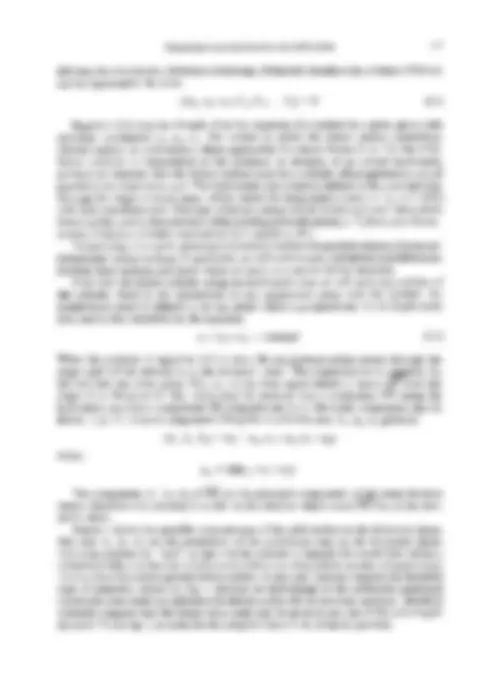
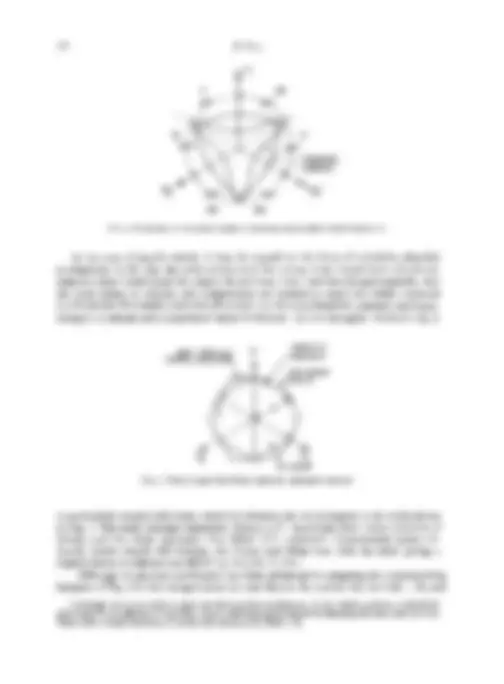
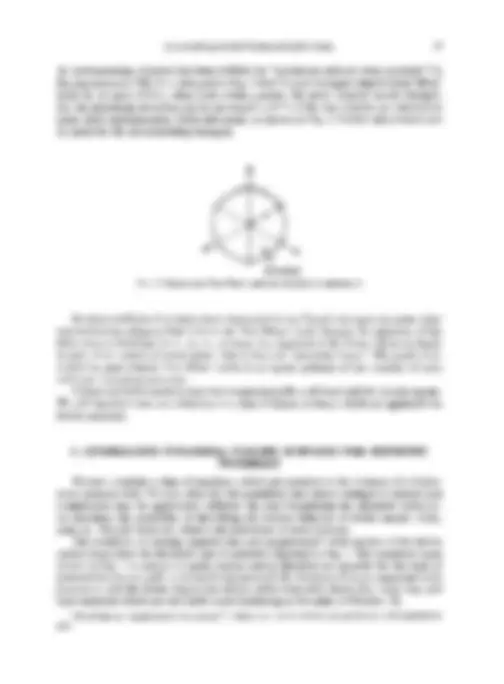
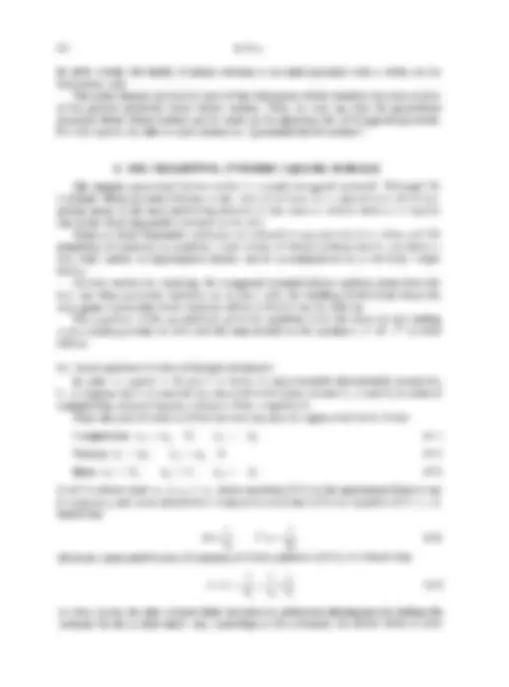
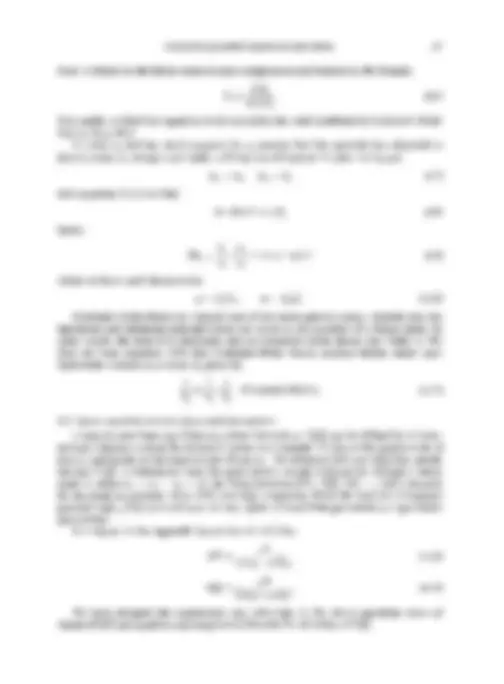
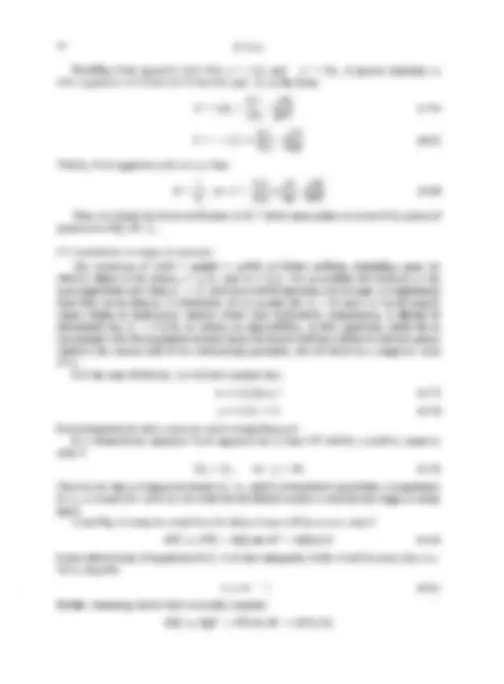
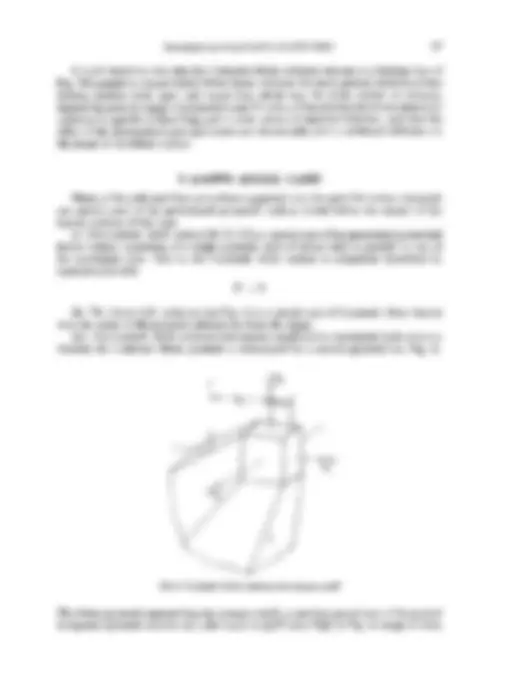
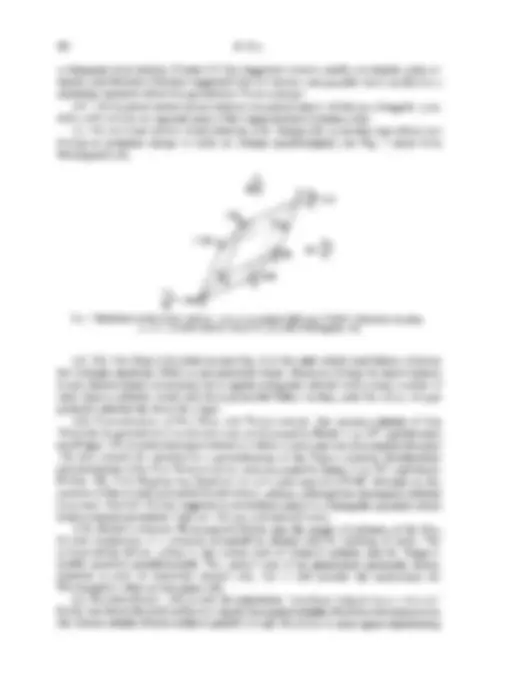
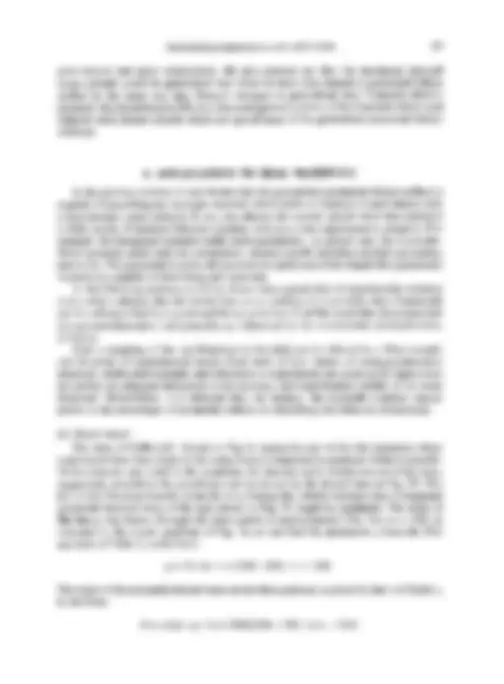
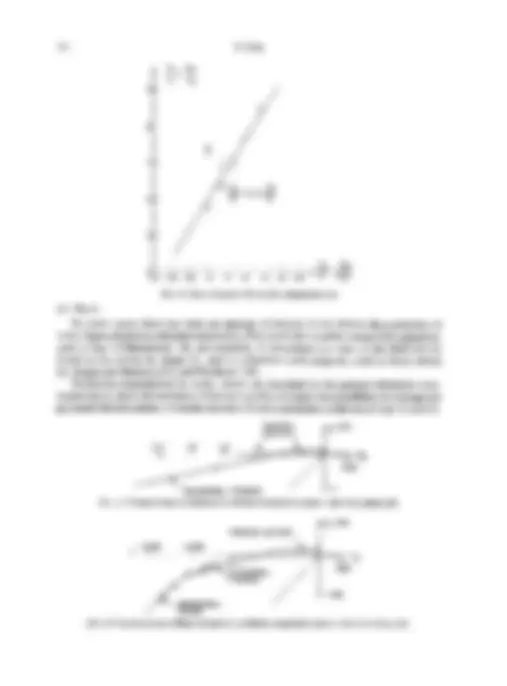
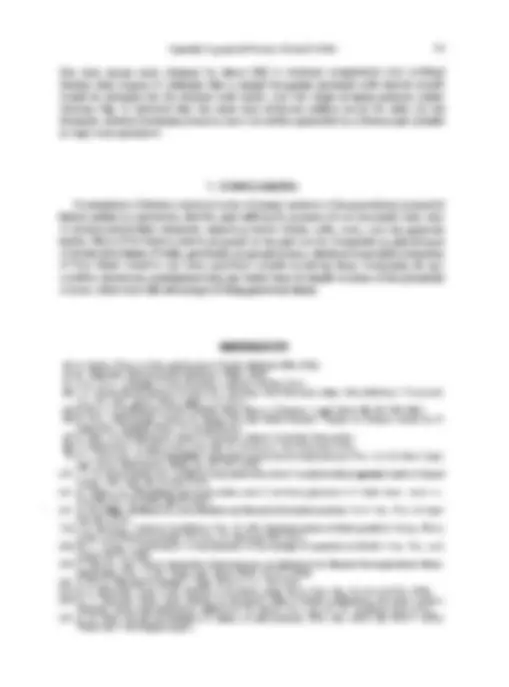
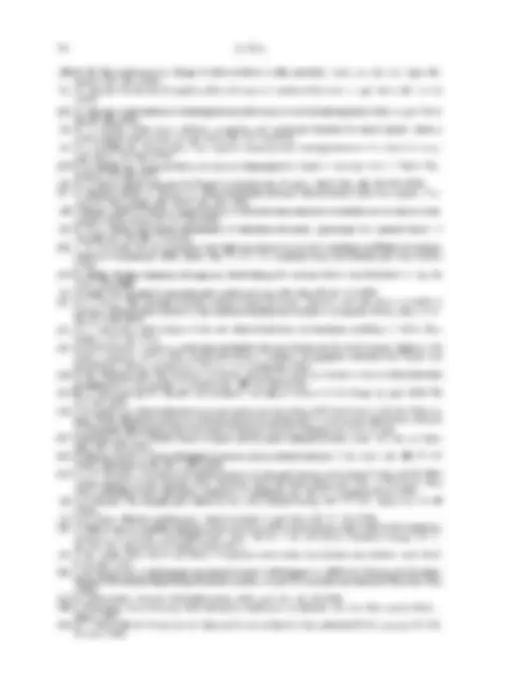
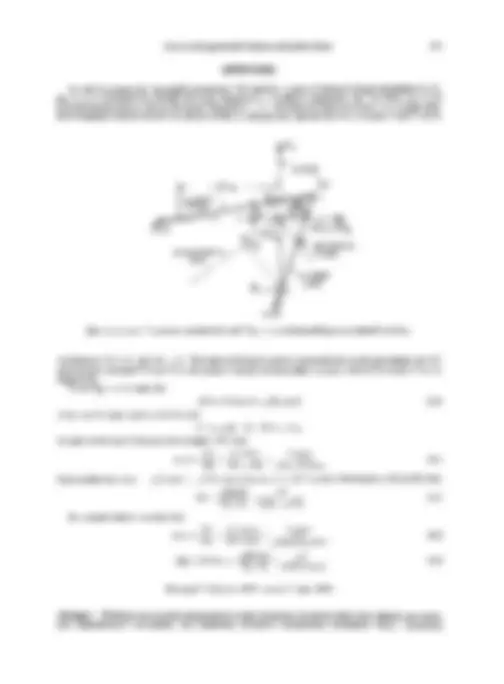



Study with the several resources on Docsity

Earn points by helping other students or get them with a premium plan


Prepare for your exams
Study with the several resources on Docsity

Earn points to download
Earn points by helping other students or get them with a premium plan
Community
Ask the community for help and clear up your study doubts
Discover the best universities in your country according to Docsity users
Free resources
Download our free guides on studying techniques, anxiety management strategies, and thesis advice from Docsity tutors
The generalized pyramidal failure criterion, a convenient approach to describing the state of stress under which isotropic materials yield or undergo brittle fracture. The document also compares this criterion to other yield and fracture criteria and provides examples of its application to various materials.
What you will learn
Typology: Lecture notes
1 / 22

This page cannot be seen from the preview
Don't miss anything!















In!. 1. Solids Strucrures, 1968, Vol. 4. pp. 175 10 196. Pergamon Press. Printed in Great Britain
Ingersoll-Rand Research Center, Princeton, New Jersey
Abstract-The generalized pyramidal failure criterion is shown to be a convenient criterion for describing the state of stress under which isotropic materials will yield or undergo brittle fracture. The generality of the criterion is useful for very complex materials, but it is believed that most materials can be adequately described by simple variants of the general criterion. For example, it is shown that the hexagonal pyramid criterion, a special case of the more general pyramidal criterion, is capable of describing a very broad range of material behavior through the use of only three experimentally determined parameters. The application of the pyramidal criteria to real materials is illustrated in a review of experimental results on brittle metals, concretes, natural rocks, granular materials, and soils.
MATERIAL behavior under time-independent, isothermal conditions can be classified as ductile at one extreme and brittle at another extreme, while many materials can be made to undergo a transition* from the ductile state to the brittle state or vice-versa. By definition, all materials “in the ductile state” will undergo yielding before they ultimately fracture. Those combinations of stress components which result in initial yielding of such materials are defined by a yield criterion j-@Jij; c, ) C,).. .) = (^0) (1.1)
where cij (i = 1,2,3) are stress components referred to an arbitrary Cartesian coordinate system xi, and C,, C,,... etc., are constants which presumably can be determined by means of suitable experiments. Materials will be said to be in a “brittle state” if fracture takes place before any appreciable plastic flow occurs. For such materials an equation, of the form (1. l), may exist which defines all those combinations of stress components which will cause fracture ; such an equation, if it exists, defines a fracture criterion. Although initially ductile metals will usuallyt fracture if loading is continued beyond initial yield (ductile fracture), there is no evidence available that an equation of type (1.1) can be used to predict the final state of stress at which these metals will fracture. It is known that the path of loading and the strain history play a large role in the ductile fracture process, for the case of arbitrary (non-proportional) loading. Thus, we see that it is certainly meaningful to seek yield criteria for materials in the ductile state andfracture criteria for materials in the brittle state, but we should not expect
175
176 B. PAUL
a universal fuilure criterion to simultaneously describe yielding, brittle fracture, and ductile fracture. Our present knowledge of initial yield criteria for isotropic ductile materials is quite good, and fortunately these yield criteria are of a reasonably simple nature. However, our state of knowledge on brittle materials (including ceramics, rocks, soils, and granular media, as well as brittle metals) is relatively imperfect. Furthermore, the variety of ad- missible fracture criteria for brittle materials would, on the surface, seem to be very much greater and much more complex than the few simple criteria which govern yielding of ductile materials. In this paper we seek to show that most of the fracture criteria which have been proposed over the past years can be viewed as special cases of a particular fracture criterion which we will refer to as the generalized pyramidalfailure criterion. Although it is our intention to apply this generalized criterion mainly tofracture, we call it a failure criterion because it can represent, with suitable accuracy, any equation of the form (l.l), whether it be interpreted as a yield or fracture criterion. Of course, unlimited generality, in itself, is not necessarily of great value. But, when it turns out that the simplest variants of a very general criterion, can describe, with great accuracy, an extremely wide class of experimental observations, then the simpler variants of the general criterion become a valuable working tool. We will show that the simplest variant of the generalized pyramidal criterion, which we refer to as the hexagonal pyramid failure criterion, can correlate the greatest bulk of available experimental evidence on brittle metals, rocks, and soils. Not only does the inherent simplicity of this three-parameter piecewise-linear failure criterion make it mathematically attractive, but specialization of the material parameters reduces the hexagonal pyramid criterion to the well known Coulomb-Mohr criterion which has already been demonstrated to have a wide (though not unlimited) range of application for soils [2,3], rocks [4], and other brittle materials [5]. Although some pertinent past work is described in these papers, more comprehensive reviews will be found in standard works such as Nadai’s [ 11, and in a forthcoming chapter by Paul [6]. In the next section, we briefly discuss the pressure-independent class of yield criteria which are suitable for ductile metals, but are inadequate for brittle materials. In Section 3, a generalized pressure-dependent criterion, called a pyramidal failure criterion, is described, and a specialized case, the hexagonal pyramid criterion, is described in the next section. In Section 5, it is shown that a great many of the yield and fracture criteria proposed in the past are special cases of the pyramidal criterion. In the next Section, it is shown how the pyramidal criterion correlates experimental results for brittle metals, granular materials such as soils, concrete, and natural rocks. Conclusions are stated in Section 7.
Since any stress component rrij can be expressed in terms of the three principal stresses ol,fl2,63r and^ three^ angles^ which^ define^ the principal^ directions^ in physical^ space, the failure criterion (1.1) can be expressed in terms of three principal stresses and three angles rather than in terms of six stress components referred to an arbitrary coordinate system. The directions of principal axes cannot influence the yielding of an isotropic material
178 B. PAUL
I YI 60 60°*
FIG. 1. Projection on deviatoric plane of cross-section normal to hydrostatic axis.
In the case of ductile metals, it may be argued on the basis of extremely plausible assumptions [9, IO], that the yield surface must be convex when viewed from outside (i.e. concave when viewed from the origin). In addition, it has been found experimentally, that the yield points in tension and compression are essentially equal for mildly annealed ductile metals. It is readily seen that all convex loci showing threefold symmetry and equal strength in tension and compression must lie between the two hexagons shown in Fig. 2.
ST
MAX. REDUCED ’ ‘RESS CRITERION
6 =0.134 R FIG. 2. Tresca’s and Von Mises’ yield loci matched in tension.
A particularly simple yield locus, which lies between the two hexagons, is the circle shown in Fig. 2. The inner hexagon represents Tresca’s [ 1 l] maximum shear stress criterion of failure, and the circle represents Von Mises’ [12] criterion*. Experimental points for ductile metals usually fall between the Tresca and Mises loci, with the latter giving a slightly better correlation (see Hill [7, p. 211, [16, 17, 181). Although no physical justification has been advanced for adopting the circumscribing hexagon of Fig. 2, it was recognized as an outer bound, for convex loci, by Ivlev [19], and
Generalized pyramidal fracture and yield criteria 179
its corresponding criterion has been dubbed the “maximum reduced stress criterion” by ~aythornthwaite [20J. it is indicated in Fig. 2 that Tresca’s hexagon departs from Mises’ circle by at most 134%, when both criteria predict the same uniaxial tensile strength, but the maximum deviation can be decreased to 6.7 % if the two criteria are matched at some other experimentally observable point, as shown in Fig 3. Similar adjustments can be made for the circumscribing hexagon.
8=0.067~ FIG. 3. Tresca’s and Von Mises’ yield loci matched to minimize 6.
In many problems it is much more convenient to use Tresca’s hexagon (or some other approximating polygon) than it is to use Von Mises’ circie because the equation of the latter Iocus is nonlinear in cri , cr2, LT~,whereas the equations of the former Iocus are linear in each of six sectors of stress space; that is they are “piecewise linear”. We could, if we wished to, approximate Von Mises’ circle by a regular polygon of any number of sides with ever increasing accuracy. Cylindrical failure surfaces have been experimentally confirmed only for ductile metals. We will therefore turn our attention to a class of failure surfaces, which are applicable to brittle materials.
We now consider a class of materials, which are sensitive to the presence of a hydro- static pressure t’ieid. We also allow for the possibility that failure strength in tension and compression may he appreciably different. By thus broadening the allowable behavior, we introduce the possibility of describing the known behavior of brittle metals, rocks, soils, etc. We still, however, observe the restriction of strict isotropy. The condition of isotropy requires that any equipressure* cross-section of the failure surface must show the threefold type of symmetry depicted in Fig. 1. The innermost locus shown in Fig. 1 is concave in some regions and is therefore not possible for the class of materials known as stable, work-hardening materials [9]. However, if we are concerned with fracture or with the failure of granular media, rather than with plasticflow, there may well exist materials which are not stable work-hardening in the sense of Drucker [9].
Generalized pyramidal fracture and yield criteria 181
failure surface. Each of the twelve sides is an intersection of the equipressure plane with an oblique plane represented by an equation of the form Aa,+Bo,+Co, = 1. (3.1) Although there are twelve sides, the thirty-six constants of type A, B, C are not all independ- ent. It may be seen from Fig. 4 that the cross-section is actually the intersection of two hexagons each of which is completely defined by any one of its six sides.
oblique plane whose equation is A’o, +L&,+c’o, = 1. (^) (3.2) Symmetry requires that the oblique planes corresponding to the sides of “hexagon number one” are described by the equations shown in Table 1.
TABLE ~.EQUATIONSOFHEXAGONAL PYRAMIDS
Region Side
Ordering of principal stresses
Equation Eq. No.
I II III IV V VI
P:Q: 6,^ >^ (12^ >^ UJ^ A’u, +B'az +C'u3 =^1 3.2-l
the six sides of the cross-section.
define the six planes passing through the convex hexagon PfQ:P:QfP:Q;. The equations for this second set of six space planes are found from Table 1, merely by replacing all superscript ones by superscript twos. If the cross-section consisted of 6n sides, we would require 3n independent constants
The equations for the 6n space planes would be given as in Table 1, with the superscript 1 replaced by j = 1, 2,... n, in succession. It is apparent from equations (3.2) that each of the six planes passing through “hexagon number one” intersect at a common point where
0 r = g2 = o3 = l/(A’ +B’ + C’). (^) (3.3)
182 B. PAUL
In other words, the family of planes encloses a six-sided pyramid with a vertex on the hydrostatic axis. The same remarks are true for each of the n hexagons which comprise the cross-section of the general piecewise linear failure surface. Thus, we may say that the generalized piecewise linear failure surface can be made up by adjoining sets of hexagonal pyramids. For this reason, we refer to such surfaces as “pyramidal failure surfaces”.
The simplest pyramidal failure surface is a single hexagonal pyramid. Although the Coulomb-Mohr pyramid belongs to this class of surfaces, it is a special case which sup- presses many of the most interesting features of this class of surfaces because it requires one of the three disposable constants to be zero. When all three disposable constants are allowed to assume non-zero values and the possibility of concavity is admitted, a rich variety of failure surfaces results, and hence a very wide variety of experimental results can be accommodated by a relatively simple theory. Another motive for studying, the hexagonal pyramid failure surfaces arises from the fact that these pyramids represent, as we have seen, the building blocks from which the most general piecewise linear isotropic failure criterion can be built up. The equations of the pyramid are given by equations (3.2), but since we are dealing with a single pyramid, we will omit the superscripts on the constants A’, B’, C’ in what follows.
4.1 Space equations in terms of strength parameters
In order to express A, B, and C in terms of experimentally determinable properties, let us suppose that the material was observed to fail under stresses S,, S, and S, in uniaxial compression, uniaxial tension, and pure shear, respectively. Thus, the state of stress at failure in each case may be represented in the forms : Compression : crl = oZ = 0 ; (T3= -s, (^) (4.1) Tension:a,=S,; o,=a,=O (^) (4.2) Shear: g1 = S,; crZ = 0; fl3 = -s,. (^) (4.3) In all the above cases, (rl 2 e2 2 (TV,hence equation (3.2-l) is the appropriate form to use in each case, and upon substitution of equations (4.1) and (4.2) into equation (3.2-l), it is found that
Cc-f. (^) (4.4)
However, upon substitution of into equ;ftion (3.2-l), it is found that
A-C =; = ;++ s f E
In other terms, the state of pure shear provides no additional information for finding the constant B, but it does show that, according to this criterion, the failure stress in pure
(^184) B. PAUL
Recalling from equation (4.4) that A = l/S, and -C = i/S,, it proves desirable to solve equations (4.12) and (4.13) for l/S, and l/S, in the form :
Finally, from equation (4.8) we can find
Thus, we obtain the three coefficients A, B, C of the space plane in terms of the pyramid parameters OQ, OP, S,.
4.3 Limitations on range of constants The equations of Table 1 predict a variety of failure surfaces, depending upon the relative values of the ratios q = S&S,, and m = S,/S,. Let us confine our attention to the most important case where S, > S,, since most brittle materials are stronger in compression than they are in tension. Furthermore, let us assume that S, > 0, since we would usually expect failure in hydrostatic tension rather than hydrostatic compression. It should be mentioned that S, < 0 is by no means an impossibility. In fact, materials which fail in accordance with the maximum normal strain (or stress) criterion will have a failure surface which is the convex hull of two intersecting pyramids, one of which has a negative value of S”. For the sake of brevity, we will now assume that
m = (SC/S,) 2 1 (4.17) q = SC/S” > 0. (4.18)
Generalizations for other cases are quite straightforward. It is immediately apparent from equation (4.12) that OP will be a positive quantity only if 3s” > s,; i.e. : q < 3m (4.19) Thus we see, that as long as we require S,, S, , and S, to be positive quantities, it is necessary for S, to exceed the value S,/3 in order for the failure surface to enclose the origin in stress space. From Fig. 4 it may be noted that the failure locus will be convex only if OP: 2 OPT = OQ: sin 30” = OQ:(1/2) (^) (4.20)
Upon substitution of equations (4.12, 4.13) into inequality (4.20), it will be seen that con- vexity requires q2m-2. (4.21) Similar reasoning shows that convexity requires OQ: 2 OQT = OP: sin 30” = OPi(1/2)
Generalized pyramidal fracture and yield criteria
or q I2m-1. In short, the yield locus will be convex if, and only if, q lies in the interval
185
4.4 Failure loci for plane stress
If fr3 is set equal to zero in Table 2.
m-2IqI2m-1. (4.23)
equations (3.2), one obtains the six equations shown in
TABLE 2. EQUATIONSFOR^ BIAXIALSTATESOF STRESS
Region Equation Slope S = da,/da,
I II III
IV
V VI
Au,+Ba, = 1 Au,+Bu, = 1
Aaz+Cu, =l
Bu2+Cu, =l
Bu, +Cu, = 1 Au, +Cu, = 1
-A/B = m/(m-q- 1) -B/A = (m-q-1)/m
-CIA = ;
-C/B = 1q+l-m
-B/C = qfl-m -AJC = m
In Table 2, equations (4.4) and (4.9) have been used to express the slope S in terms of m and q. It turns out that there are five characteristic shapes of biaxial failure loci, which are readily drawn once one knows the general range of the slope S = daJda,. The five possible cases are summarized in Table 3. Since the biaxial stress locus must be symmetrica about
TABLE 3. RANGE OF SLOPESFOR BIAXIALSTRESSLOCUS
Range of slope S in region Case Range of q Remarks II III IV
3m < q Inadmissible* -2-L< - 1 1 1 A 2m-l<q<3m (^) m m 2m_1sS<; Concave? 1 1 B miqI2m-1 -1<s<-1^ m m --IS<1 m^ ConvexS
1 1 C m-l<q<m --^ <s<o _^ l<S<co^ ConvexJ m m
D m-2<q<m-1 O<S<J
-^1 - co<.%< -1 Convex m m 1 1 E q<m-2^ - m^ <S - m^ -lIS<O^ Concave?
Generalized pyramidal fracture and yield criteria 187
It is of interest to note that the Coulomb-Mohr criterion (shown as a limiting case of Fig. 5D) predicts a closed biaxial failure locus, whereas the more general criterion of this Section predicts both open and closed loci, which may be either convex or concave, depending upon the range of parameters used. It is also of interest that this three-parameter criterion is capable of describing such a wide variety of material behavior; and that the effect of the intermediate principal stress can theoretically exert a profound influence on the shape of the failure surface.
Many of the yield and fracture surfaces suggested over the years for various materials are special cases of the generalized pyramidal surface. Listed below are several of the known surfaces of this type. (i) The Coulomb-Bohr surface [30,31,32] is a special case of the generalized pyramidal failure surface, consisting of a single pyramid, each the coordinate axes. That is, the CoulombMohr equation (3.2) with
B1 = 0.
of whose sides is parallel to one of surface is completely described by
(ii) The Tresca [ll] criterion (see Fig. 2) is a special case of CoulombMohr theory with the vertex of the pyramid infinitely far from the origin. (iii) The Coulomb-Mohr criterion with tension cwtofi [5] is a pyramidal yield criterion wherein the Coulomb-Mohr pyramid is intercepted by a second pyramid (see Fig. 6).
FIG. 6. CoulombMohr criterion with tension cutoff.
This latter pyramid, representing the tension cutoffs, is another special case of the general hexagonal pyramid wherein two sides (such as Q$P: and P:Qi in Fig. 4) merge to form
188 B.^ PAUL
a triangular cross section. Cowan [33] has suggested tension cutoffs of a slightly different nature, and Drucker [34] had suggested that no tension was possible (zero cutoffs) for a particular pyramid which is a generalized Tresca cylinder. (iv) The maximum normal stress criterion is a special case in which two triangular pyra- mids, with vertices on opposite sides of the origin intersect to form a cube. (v) The maximum normal strain criterion of St. Venant [35] is another case where two triangular pyramids merge to form an oblique parallelepiped; see Fig. 7 taken from Westergaard [36].
FIG. 7. Maximum normal strain criterion, union of pyramids VABC and V’A’B’C’. Projection on plane c3 = 0; numbers indicate values of us/S,, after Westergaard [36].
(vi) The van Mises [12] criterion (see Fig. 2) is the only widely used failure criterion for isotropic materials which is not piecewise linear. However, it may be approximated to any desired degree of accuracy by a regular polygonal cylinder with a large number of sides. Such a cylinder would also be a pyramidal failure surface, with the vertex of each pyramid infinitely far from the origin. (vii) Generalizations of Van Mises and Tresca criteria. The circular cylinder of Von Mises can be generalized to a circular cone, as discussed by Nadai [ 1, p. 2271 and Drucker and Prager [37]. A pyramidal approximation to this circular cone was discussed by Drucker [34] who viewed the pyramid as a generalization of the Tresca criterion. Paraboloidal generalizations of the Von Mises criterion, were discussed by Nadai [l, p. 2271 and Stassi- D’Alia [38]. Civil Engineering literature on soils and concrete [39,40] abounds in dis- cussions of the conical and paraboloidal failure surfaces, although not necessarily referred to as such. Murrell [41] has suggested a paraboloid joined to a triangular pyramid which forms a maximum tension “add-on”, for use with natural rocks. (viii) Becker’s criterion. Westergaard [36] felt that the weight of evidence, at the time, favored acceptance of a criterion advanced by Becker [42] for yielding of steels. The corresponding failure surface is the convex hull of Tresca’s cylinder and St. Venant’s double pyramid (parallelepiped). This special case of the generalized pyramidal failure criterion is now of historical interest only, but it did provide the motivation for Westergaard’s often quoted paper [36]. (ix) Haythornthwaite [20] coined the expression “maximum reduced stress criterion” for the case where the yield surface is a regular hexagonal cylinder which would circumscribe the Tresca cylinder if both surfaces passed through the points in stress space representing
190 B. PAUL
TENSION CUTOFF UNMODIFIED COULOMB-M
, HEXAGONAL PYRAMID
(0 EXPERIMENTS) Ii________
FIG. 8. Data of Coffin [43] on gray cast iron fitted by pyramidal criterion with m = 2.04, q = 1.
The above value has been used to draw the portion ofthe fracture locus in the first quadrant. It is seen that a hexagonal pyramid (with, or without tension cutoffs) describes the major features of the fracture locus for this Cast Iron under biaxial stress. In order to evaluate the need for such a generalization of the CoulombMohr criterion, it is important to know whether the experimental points, shown in the third quadrant, represent true biaxial stress states, or if they represent states with three non-zero principal stresses (a possibility suggested in [5]). This question could theoretically be resolved by finding additional points in region IV, where 0 > o2 > pi.
6.2 Soils The most common test for determining the failure criterion for a granular material is the confined compression or so-called “triaxial test”. Although such a test is capable of ruling out the possibility that the CoulombMohr (or any other hexagonal pyramid) criterion is applicable, it cannot confirm that such criteria are valid because these tests only provide two points when projected centrally onto an equipressure plane. More general tests such as torsion-compression or compressioncompression on hollow cylinders are required to trace out the true locus on a typical equipressure plane. Such tests, although an improvement on the confined pressure tests are limited because they are essentially plane stress types of tests. Some recent experiments, where all three principal stresses were varied independently, indicate that, although the time-honored Coulomb Mohr criterion represents a reasonable first approximation for many soils, there is a very definite influence of intermediate principal stress, which is not accounted for by the
Generalized pyramidal fracture and yield criteria 191
Coulomb-Mohr criterion. Several previous authors, who have discussed this point, have suggested that the failure criterion should be expressed in terms of the second, and possibly, the third, invariant of the stress tensor in order to include such effects. However, in the experimental data which the author has seen, some of which is presented below, a pyramidal failure criterion is at least equally, reasonable from a practical viewpoint. Shibata and Karube [44] have modified the standard “triaxial cell” in such a way as to be able to independently vary the intermediate principal stress. Figure 9 shows their data, projected centrally from a postulated vertex point, onto an equipressure plane (the influence of pore water pressure has been subtracted out). It is seen that there must be an
COULOMB- MOHR LOCUS
SUGGESTED NONLINEAR LOCUS
POSSIBLE PYRAMIDAL SURFACE
FIG. 9. Experimental data of Shibata and Karube [44] for normally consolidated clay (effective stresses shown).
effect of intermediate principal stress since the data points do not lie on the CoulombMohr locus. Shibata and Karube suggest that the data should be correlated by the dotted curve shown on the left hand side of the Figure (only half of the symmetric locus is shown). The polygon on the right hand side represents an equally acceptable pyramidal type of failure criterion. Sides such as ED may be interpreted as tension cutoffs (possibly pressure- dependent cutoffs) which intercept a hexagonal pyramid.
6.3 Dry granular media
Lenoe [45] constructed apparatus for independently varying any one of the three principal stresses acting on a granular sample, and has used it to find the failure criterion for a mixture of sand, silt, and gravel. He concludes that the intermediate principal stress plays a significant role in the failure criterion and suggests that his data can be correlated by a failure criterion of the form J, = 160+0*223 J3 or J, = 215 +0.0535 J, , where .I,, Jz, J3 are the first three variants of the stress tensor. However, it is hardly necessary to resort to nonlinear criteria because the data can be satisfactorily correlated by a hexagonal pyramid failure criterion, whoje equation is
20, +4a,-o, = 0; (^) @,I2 <a,)
Lenoe’s data is replotted in Fig. 10, where it may be seen that all points, with the exception of one (marked point A in Fig. 10) fall within 5 Y0of the ordinate value predicted by the above equation.
Generalized pyramidal fracture and yield criteria 193
The data shown were obtained by Brace [49] in confined compression and confined tension tests. Figure 11 indicates that a simple hexagonal pyramid with tension cutoffs would be adequate for the diabase rock tested, over the range of mean pressure tested, whereas Fig. 12 indicates that the same type of failure surface would be valid, for the dolomite tested at low mean pressures, but it would be superseded by a Tresca type cylinder at high mean pressures.
Formulation of failure criteria in terms of simple variants of the generalized pyramidal failure surface is convenient, flexible, and sufficiently accurate for an extremely wide class of pressure-dependent materials, including brittle metals, soils, rocks, and dry granular media. Most of the failure criteria proposed in the past can be interpreted as special cases of pyramidal criteria. Finally, previously proposed criteria, which are essentially extensions of Von Mises’ criterion (or other nonlinear criteria involving stress invariants), do not correlate the known experimental data any better than do simple versions of the pyramidal criteria, which have the advantage of being piecewise-linear.
[2] K. TERZAGHI, Theoretical Soil Mechanics. Wiley (1943). [3] R. F. SCOTT, Principles of Soil Mechanics. Addison-Wesley (1963). [4] J. C. JAEGER,Brittle fracture of rocks, Proc. 8th Symp. Rock Mechanics, Sept. 1966, edited by C. FAIRHURST. Am. Inst. Min. metall. Petrol. Engrs, 3-57 (1967). [5j B. PAUL,A modification of the CoulombMohr theory of fracture. J. appl. h4ech. 28,259-268 (1961). [6j B. PAUL, Macroscopic criteria for plastic flow and brittle fracture. Treatise on Fracture, edited by H. Ltxnowz~ Academic Press. (To be published.) [7j R. HILL., The Muthemoticaf Theory of Plasticity. Oxford University Press (1950). [8] S. TIMOSHENKO, Strength of Materials, Part II, 3rd edition. Van Nostrand (1956). [9] D. C. DRUCKER,A more fundamental approach to plastic stress-strain relations. Proc. 1st U.S. Nutn. Congr. appl. Mech. Published by ASME, pp. 487-491 (1952). [lo] J. F. W. BISHOPand R. HILL, A theory of the plastic distortion of a polycrystalline aggregate under combined stresses. Phil. Msg. 42,414427 (1951). [I 11 H. TRESCA,Sur l’ecoulement des corps solides soumis a les fortes pressions. C.R. hebd. S&nc. Acad. Sci., Paris S9,75&758 (1864); 64,89 (1867). [12] R. VONMtsm, Mechanik der festen Koerper im Plastisch deformablen Zustand. Nuchr. Ges. Wiss. Gorringer 582-592 (1913). [13] J. C. MAXLL, Letter to Lord Kelvin, Dec. 18, 1856. Pertinent portion of letter quoted by NADAI, Theory of Flow and Fracture of Solids, Vol. II, p. 43. McGraw-Hill (1963). [14] M. T. HUBER,A contribution to fundamentals of the strength of materials (in Polish). Czus. Tow. tech. krakow 22, 81 (1904). [15] H. HENCKY, Zur Theorie plastischen Deformationen und hierdurch im Material hervorgerufenen Neben- spannungen. Proc. 1st Int. Congr. appl. Mech. Delft, 312-317 (1924). [16] A. NADAI,Theories of strength. J. uppl. Mech. 1, 111-129 (1933). [17] D. C. DRUCKER,Stress-strain relations in the plastic range. Brown Unio. Rep. All-S1 to ONR, (1950). [18] D. C. DRUCKW, Stress-strain relations in the plastic range of metals--experiments and basic concepts. Rheology, Theory and Applications, edited by F. R. EIRICH,Vol. 1, pp. 97-119. Academic Press (1956). [19] D. D. IVLEV,On the development of a theory of ideal plasticity. Prikl. Mat. Mekh. 22, 850-855 (1958); PMM 1221-1230 (English transl.).
194 B. PAUL
[ Pll
WI r 1241 ml I- PI
WI v [
R. M. HAYTHORNTHWAITE,Range of yield condition in ideal plasticity. Trans. Am. Sot. civ. Engrs 127, Part I, 1252-1267 (1962). W. PRAGW, On the use of singular yield conditions and associated flow rules. J. uppl. Mech. 20, 317- (1953). W. PRAGER,A new method of analyzing stresses and strains in work-hardening plastic solids. J. uppl. Mech. 23,493496 (1956). W. T. KOITER,Stress-strain relations, uniqueness and variational theorems for elastic-plastic materials with a singular yield surface. Q. appl. Math. 11, 350-354 (1953). J. L. SANDERS,JR., Plastic stress-strain relations based on linear loading functions. Proc. 2nd VS. Congr. appl. Mech., 455460 (1955). P. G. HODGE,JR., A general theory of piecewise linear plasticity based on maximum shear. J. Mech. Phys. Solids 5, 242-260 (1957). R. T. SHIELDand H. ZIEGLER,On Prager’s hardening rule. Z. angew. Math. Phys. 9a, 260-276 (1958). N. PERRONEand P. G. HODGE,JR., Strain hardening solutions with generalized kinematic models. Proc. 3rd U.S. Natn. Congr. appl. Mech., 641-648 (1958). I. BERMANand P. G. HODGE,A general theory of piecewise linear plasticity for initially anisotropic materials. Archwm Mech. sfosow. 11,513-539 (1959). B. PAUL, Plastic and viscous deformation of redundant structures-prototypes for a general theory. J. Franklin Inst. 273,482-514 (1962). C. A. COULOMB,Sur une application des rCgles de maximis et minimis g quelques probltmes de statique, relatifs g I’Architecture. M&n. Math. Phys. 7, 1773. 343 Academic Royal des Sciences, par divers Savans (1776). [31] 0. MOHR, Welche Umstlnde bedingen die Elastizititsprenze und den Bruch eines Materials? Z. Ing. 44, 1524-1530 (1900). ~ I
[ [35l
[ [37l
[
[
[ r
~ r [
1451 [
[47l
J. GUEST,The strength of materials under combined stress. Phil. Mag. 50,69-132 (1900). H. J. COWAN, The strength of plain, reinforced and prestressed concrete under the action of combined stresses, with particular reference to the combined bending and torsion of rectangular sections. Mug. Concr. Res. 5, 75-86 (1953). D. C. DRUCKER,Limit analysis of two and three dimensional soil mechanics problems. J. Mech. Phys. Solids 1, 217-226 (1953). B. SAINT-VENANT,Lecons de mtcanique appliqude faites par interim par M. de St-Venant, Ingbnieur des ponts et chauskes. 1837 g 1838, unpublished course of lectures, lithographed; referred to by TODHUNTER and PEARSON, History ofElasticity, Vol. I, p. 831. Cambridge (1886). H. M. WESTERGAARD,The resistance of ductile materials to combined stresses in two or three directions perpendicular to one another. J. Franklin Inst. 189, 627-640 (1920). D. C. DRUCKERand W. PRAGER,Soil mechanics and plastic analysis or limit design. Q. appl. Math. 10, 157-165 (1952). F. STASSI-D’ALIA, Teoriadeilaplasticita e sue applicazioni. (A volume of XII) edited by G. DENARO,Palermo, Italy, (1958). Quoted by author in A limiting condition ofyielding and its experimental confirmation. Instituto di Tecnologie Meccaniche della Universita’ di Palermo (Facolta d’Ingegneria), N.D. (16 pp). B. BRESLERand K. S. PISTER,Failure of plain concrete under combined stresses, Trans. Am. Sot. ciu. Engrs 122, 1049-1068 (1957). B. BRE~LERand K. S. PISTER,Strength of concrete under combined stresses. J. Am. Concr. Itzs~.30,321- (1958); discussion in 30, 1035-1046 (1958). S. A. F. MURRELL,A criterion for brittle fracture of rocks and concrete under triaxial stress, and the effect of pore pressure on the criterion. Proc. 5th Symp. Rock Mechanics held at the Univ. of Minnesota, May 1962; published in Rock Mechanics, edited by C. FAIRHURST,pp. 563-577. Pergamon Press (1963). A. J. BECKER,The strength and stiffness of steel under biaxial loading. Bull. Ill. Univ. Engng Exp. Sm. 85 (1916). L. F. COFFIN,The flow and fracture of brittle material. J. appl. Mech. 17,233-248 (1950). T. SHIBATAand D. KARUBE,Influence of the variation of the intermediate principal stress on the mechanical properties of normally consolidated clays. Proc. 6th Int. Conf. Soil Mech. Foundation Engng, Vol. I, pp. 359-363. University of Toronto Press (1965). E. M. LENOE,Deformation and failure of granular media under three-dimensional stresses. Expl. Mech. 6, 99-104 (1966). E. M. BIENIAWSKI,A bibliography on fracture ofrock, CSIR Report No. MEG 355, Pretoria, South Africa, National Mechanical Engineering Research Institute, Council for Scientific and Industrial Research, May (1965). D. GRIGGSand J. HANDIN,Rock deformation. Mem. geol. Sot. Am. 79 (1960). [48] C. FAIRHURST, Proc. 8rh Symp. Rock Mechanics, edited by C. FAIRHURST,Am. Inst. Min. metall. Petrol. Engrs (1967). [49] W. F. BRACE,Brittle fracture ofrock. State of Stress in the Earth’s Crust, edited by W. R. JUDD,pp. 11l-178. Elsevier ( 1964).